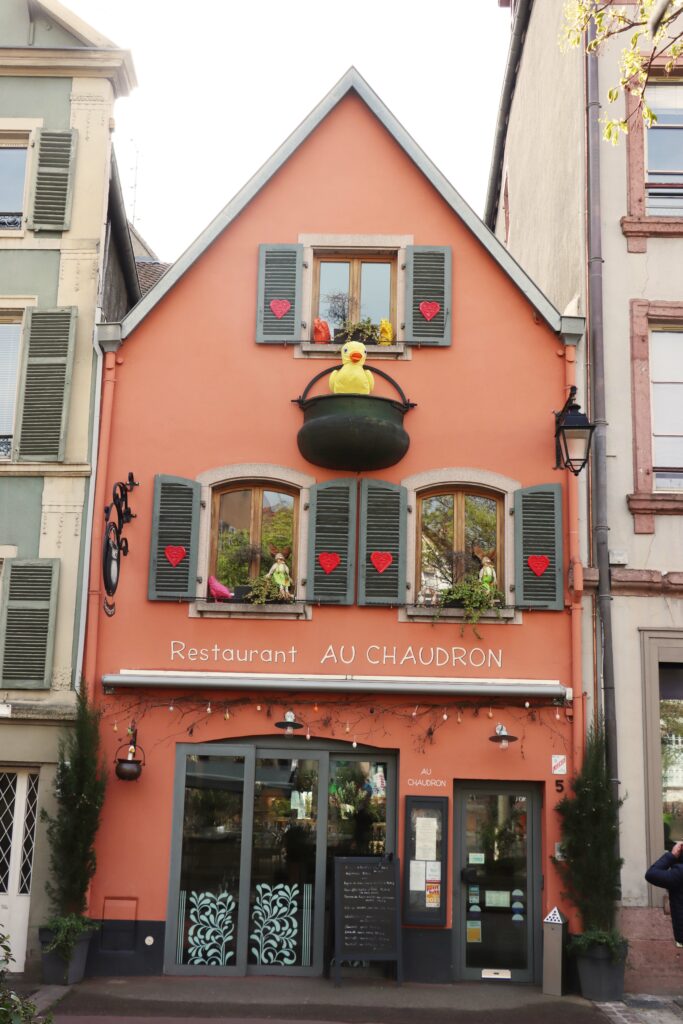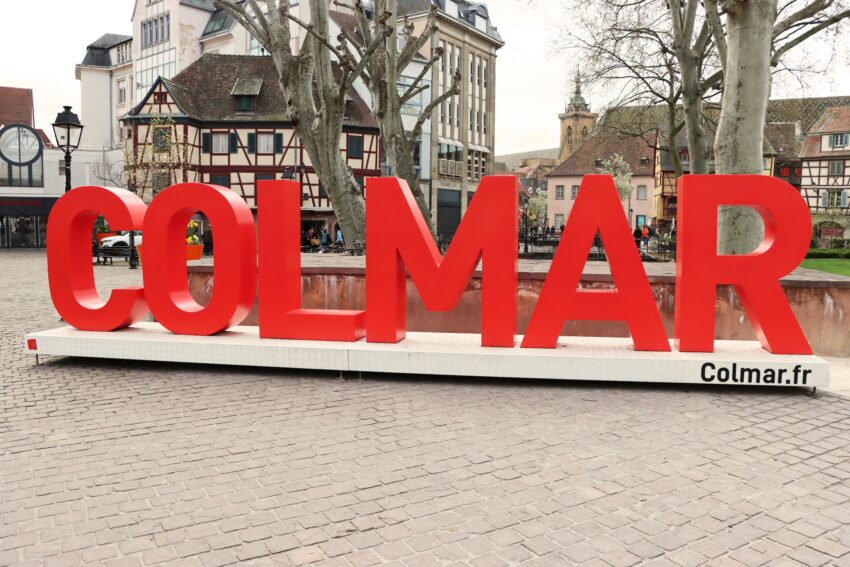There is an endearing country town settled amidst flowing canals and traditional houses with floral displays; its name is Colmar.
This French commune is the third largest town in Alsace and serves as its center of heritage, lifestyle and hospitality.
Vibrant and cozy, Colmar Alsace is bustling with events and festivals all year round. Just the sight of traditional half-timbered houses surrounding many historic buildings and sites will delight you.
Colmar is crowned as the capital of Alsace wines thanks to its flourishing food and wine economy. If you plan to tour the Alsace Wine Route, Colmar is a great starting point due to its central location.
Come, let’s explore this unique township with all its charms.
About Colmar
The first mention of the town appears in the chronicles of Charlemagne regarding the Saxon wars. Since then Colmar has been conquered by France in 1673, annexed by Germany in 1940 and reconquered in 1945.
You can see the town’s diverse history in its architecture and heritage sites. Walking on the streets of old Colmar is like visiting an open air museum. Buildings dating back to the Middle Ages continue to stand strong despite the ravishes of war. Today, there is a lot more for visitors to discover in this colorful town of Alsace.

The “Little Venice” District
Take a boat ride on the course of the Colmar Lauch (stream), popularly known as Little Venice. Similar to the city in Italy, Little Venice flows between rows of buildings on either side.
The district of Krutenau serves as the starting point of Little Venice. Originally, it was home to a small community of fishermen, market gardeners and wine-makers.
Now, Little Venice is the perfect way to see Colmar’s beautiful buildings with their colorful facades.
The Tanners District
Take a walk in the Tanners district, once home to tanners and their families. You will find yourself surrounded by heritage buildings dating back to the 17th century.
The tanner community left their skins on the upper floors to dry. Even today you can see the half-timbered and high wood framing aesthetics of the large buildings with white facades.
The Saint Martin Collegiate Church
Light a candle at the majestic Saint Martin’s. Experience the yellow Rouffach sandstone divinely shimmer as they reflect the sun rays.
Built between 1235 and 1365, St. Martin’s is a prime example of Alsatian Gothic architecture. The building has been renovated multiple times. During the last restoration efforts in 1982, evidence of old foundation and traces of extensions were found. These discoveries imply that the Church may date back to the 1100s.
Today, the Colmar residents consider Saint Martin’s their cathedral.
The Pfister House
Visit the site of Colmar’s first architectural renaissance. The Pfister House was built by Ludwig Scherer in 1537. Scherer made his fortune making hats and trading money in the Val De Liepvre. Between 1841 and 1892, the Pfister family restored the building and gave it their name.
Although the house has medieval features, it is one of the first instances of architectural renaissance in the region. The wood gallery along with a beautiful corner oriel and mural paintings will give you a taste of the old Colmar.
The House of Heads
Gaze at 106 grotesque heads inspired by the German renaissance. These heads are face sculptures which decorate the façade of the House of Heads.
Architect Albert Schmidt built this building in 1609 for Anton Burger, a shopkeeper. In 1902, sculptor Auguste Bartholdi added a statue of a cooper which now stands at the building gable.
The Koïfhus (Ancienne Douane)
Revisit Colmar’s history at the Koïfhus. Back in 1480, the Koïfhus served as a customs house. The building is strategically located at the junction of two major medieval roads, the rue des Marchands and the Grand’Rue.
Apart from official state work the Koïfhus has been a site for many other purposes. It has been a commercial office, a boy catholic school and even a theatre venue.
Today, the Koïfhus hosts many shops and restaurants renowned for their delicious wine.
The Unterlinden Museum
Travel 7000 years back in time at the Unterlinden Museum. You will witness great works of art from the Middle Ages and renaissance to the contemporary artists of the 20th century.
The chief among all artworks is the Issenheim Altarpiece created in the 16th century by Niclaus of Haguenau and Grünewald. Other famous works in the museum include the Ruckers Harpsichord and Schongauer’s engravings.
Colmar has a rich heritage and history, making it a great holiday destination. But this country town is very modest when it comes to its real charm.
Hailed as the wine capital of Alsace, Colmar is an ecosystem of flourishing vineyards that produce the best wines in the region. The town also hosts many cultural events like music and folk festivals, not to mention great shopping spots. When you leave Colmar, you take back fond memories of picturesque buildings, and perhaps a few bottles of delectable wine.
Colmar – Important FAQs
Does Colmar, France have an airport?
No, the closest airport to Colmar is Strasbourg Entzheim (SXB). Other nearby airports include Mulhouse EuroAirport (MLH).
Are there any Michelin restaurants in Colmar, France?
Yes, Colmar has 3 Michelin restaurants:L’Atelier du Peintre (1 Michelin Star),Jean-Yves Schillinger (2 Michelin Star) and La Maison Des Têtes (1 Michelin Star).
Africa Booking flight Christmas Cruises European River Cruises Finland Flights France Grenoble Italy Lake Como Lapland San Marino Santa Claus Shopping Tips Travels Vacation rentals






























